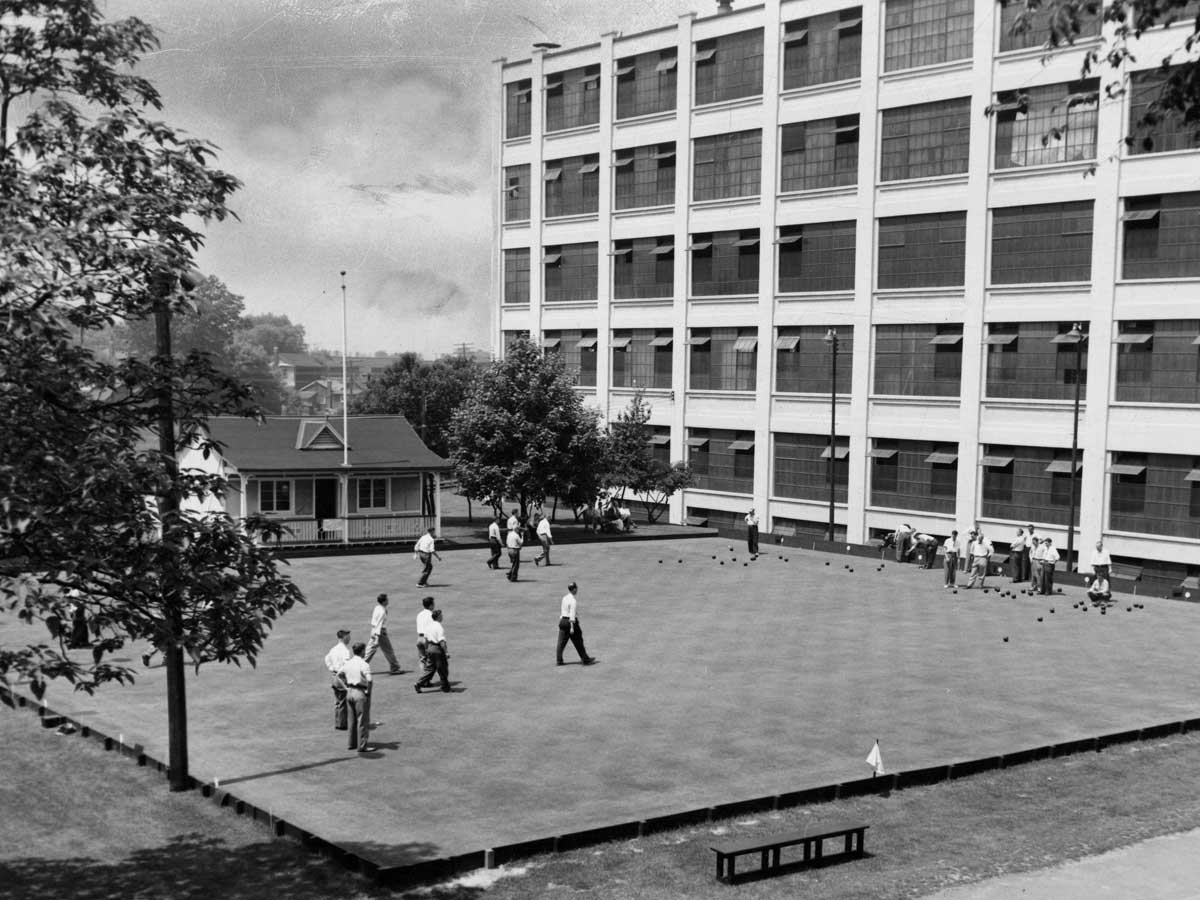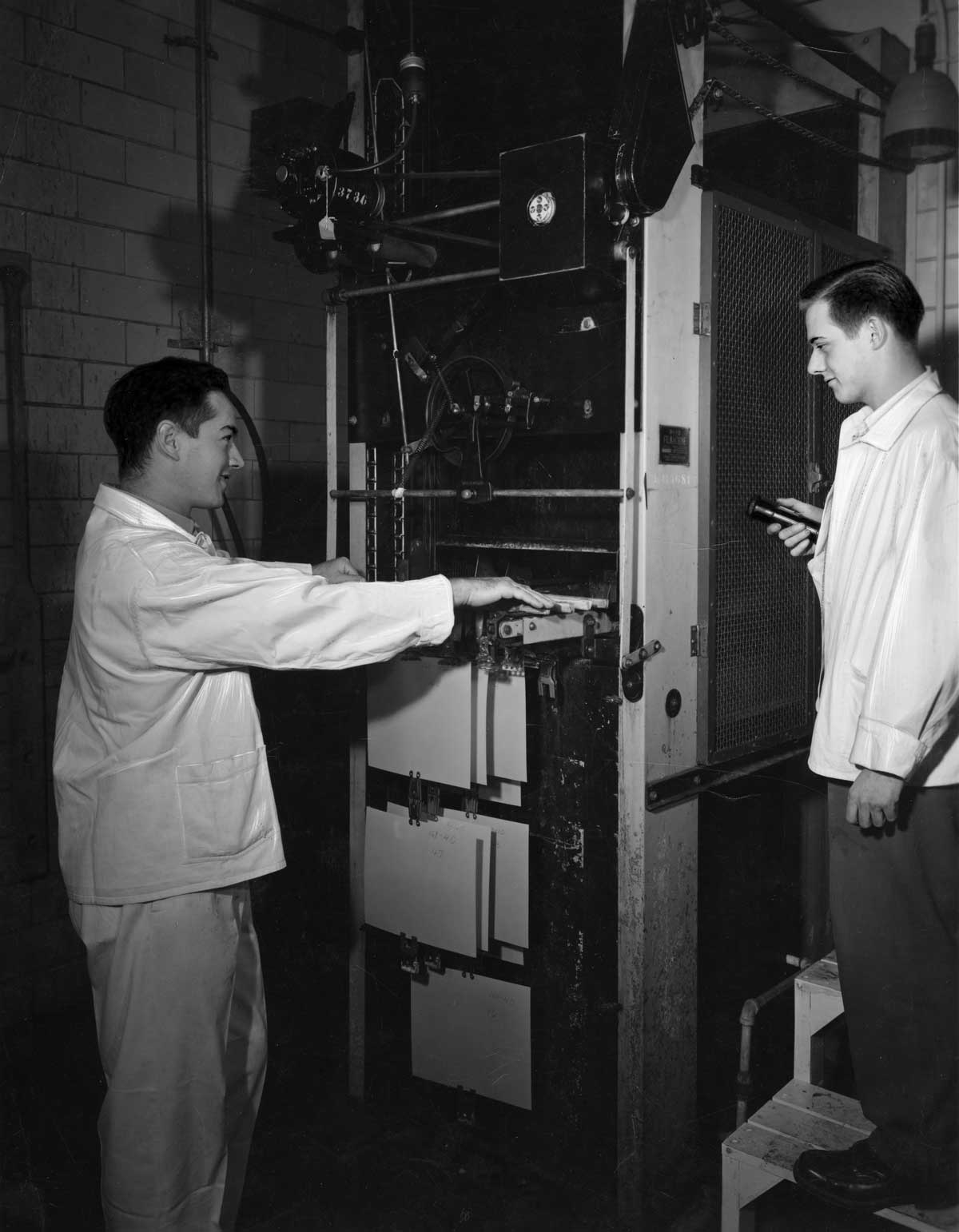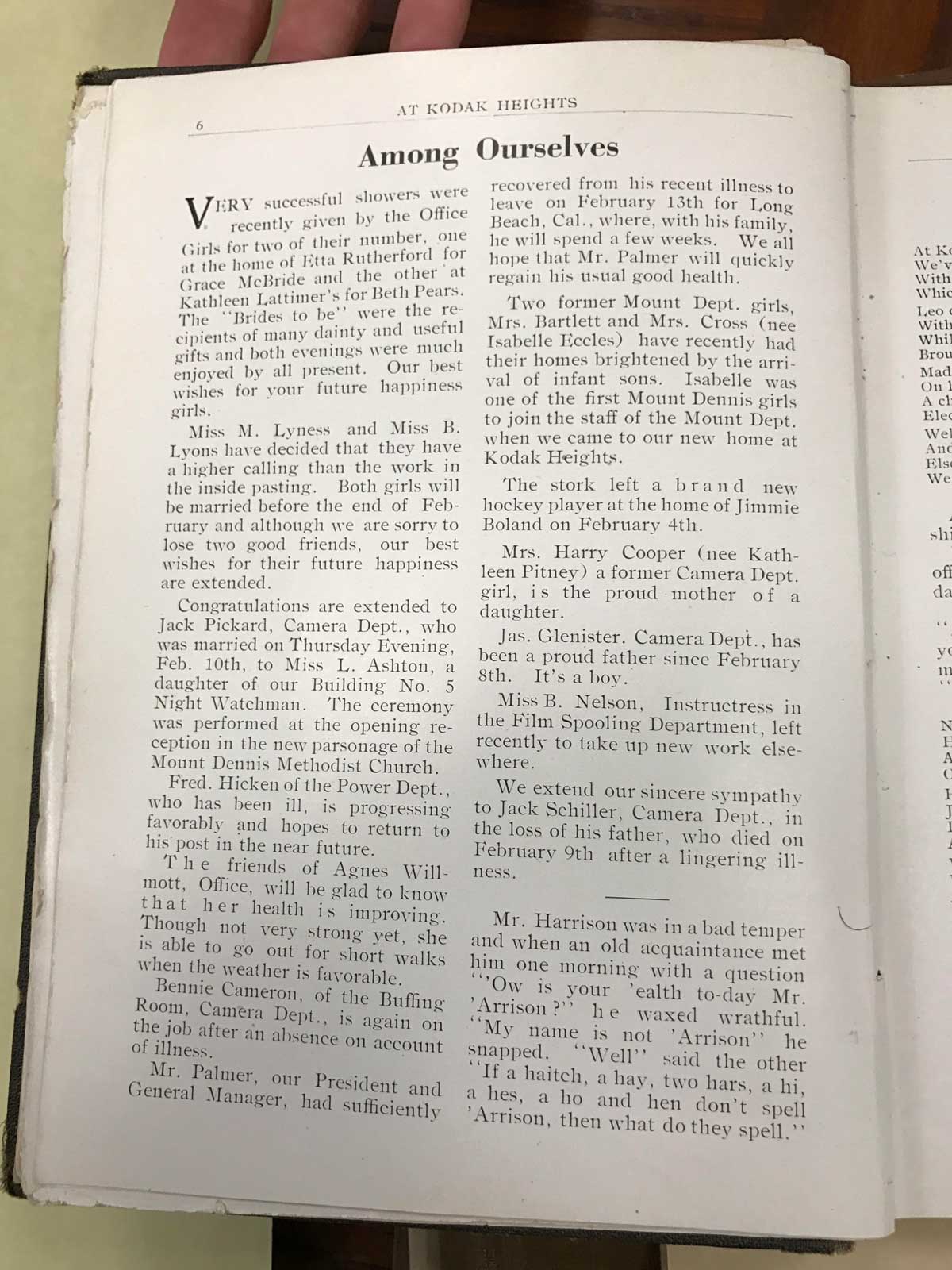Inside the Kodak collection
In 2005, Kodak Canada ended more than a century in Toronto’s Mount Dennis area when it closed its historic “Kodak Heights” factory—part of a company-wide downsizing brought about by the digital revolution. That same year, the company donated its entire Canadian archives to the Ryerson Archives and Special Collections (opens in new window) . Taken together, the Kodak Canada Corporate Archives and Heritage Collection tells the story of the rise and fall of the photography industry, and the day-to-day workplace culture of an industrial giant.
“There are a lot of entry-points to this collection,” said Alison Skyrme, librarian at Special Collections. “Researchers could be studying labour relations. They could be doing genealogical research—a lot of families had generations working at Kodak, and a lot of the history of the employees is recorded here. They can research the history of snapshot photography, or how the cameras were constructed. We have filmmakers coming in, individuals doing private research, and post-doc students doing research on all kinds of things.”
The archive includes a full record of all of the advertisements that were produced for the Canadian market from the 1920s to the ’80s; photographs by Kodak’s marketing department of the company’s products and spaces; hand-written ledgers of the company’s history; cameras, technology, and documents from across the company’s history; and complete runs of Kodak’s internal magazines.
“Employees would write a magazine, it would have everything from events, safety tips, and also births, deaths, marriages, gossip, who won the softball games,” said Skyrme. “The employee culture there was really fascinating. They had a building that had a cafeteria and a manager’s club and a stage where they would perform plays, and exercises classes and a gym and basketball.
“You can also see the progression from the simple box cameras to those proprietary film cameras that made them so much money, like the disk cameras and the micro formats.”
Kodak’s fall in the mid-2000s was sudden and devastating. “The decline was linked directly to digital,” said Skyrme. “The lack of digital products is telling. We can see an attempt to try to keep film going, because frankly, that’s where they made their money. There were certainly individuals in the company that proposed and researched digital, but the company didn’t embrace it as the future in time.”
Robert Burley, artist and Ryerson Image Arts professor, facilitated the donation while he was photographing abandoned Kodak factories for his art exhibit, “The Disappearance of Darkness.” (external link, opens in new window) “Kodak Canada in Mount Dennis was one of the places he photographed,” said Skyrme. “While photographing, he noticed that there had been a museum and archive to celebrate their anniversary not too many years beforehand, and it had a beautiful display of cameras and products they had produced, as well as the history of the company—their archives had all of the documentation back to the beginnings in Toronto in 1899.”
Even a decade later, Kodak’s workplace culture survives. Last year, after lobbying from former employees, Metrolinx literally transmitted (via railway) and preserved (external link, opens in new window) the last remaining building at Kodak Heights (it would have otherwise been demolished to make room for the Eglinton-Crosstown LRT). “It’s still standing,” said Skyrme. “People are really attached to that building
To learn more about the Kodak Canada Corporate Archives and Heritage Collection, visit the Ryerson Archives and Special Collections database (opens in new window) , or visit the new reading room on the 4th floor of the library, open from Monday to Friday, 9-5. To book an appointment, contact specialcollections@torontomu.ca or call 416-979-5000 ext 7027.









